- Administrator
- Albums and Singles
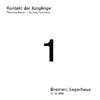 According to Asmus Tietchens' web site, "Kontakt Der Jünglinge 1" was recorded in the '"Lagerhaus" in Bremen, Germany in 1999. I've witnessed a number of live improvisations with sound and noise in which some unexpected event outside the performance space occurred, such as an ambulance passing by with a loud siren. The performers would typically accept the additional source material and work it into their piece.
According to Asmus Tietchens' web site, "Kontakt Der Jünglinge 1" was recorded in the '"Lagerhaus" in Bremen, Germany in 1999. I've witnessed a number of live improvisations with sound and noise in which some unexpected event outside the performance space occurred, such as an ambulance passing by with a loud siren. The performers would typically accept the additional source material and work it into their piece.
In this case it's not a siren, but rather a distant throbbing beat of what must be a band performing or a disco upstairs or next door. I can only guess that the "Lagerhaus" is a nightclub, or adjacent to one, although it's also possible that this sound is a sample brought to the performance by one of the artists. That's part of the charm of listening to a quality recording of a live performance: you don't quite know whether the whole thing was done on a laptop with digitally-stored sounds, or whether the artists were collecting ambient sounds from the performance space, treating them, then releasing them back into the space as part of the performance. This recording definitely sounds like the latter. The deep throb of a distant disco drifts into the piece several times, and sounds so natural. But the beat appears only in small sections, while the overall 45-minute piece is mostly dense with wind and whooshing sounds. If you like your sound a bit more sparse, listen first to Kontakt der Jünglinge 0 (see below).
 
Read More
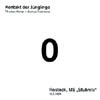 Recorded inside of a ship in Germany in 2001, this 42-minute piece is sometimes very quiet, with bursts of static and sounds like gurgling water. Elsewhere it has many layers of distinct sounds from drones to gently crackling static. There's a nice range from low to high frequencies and from droning to beeping/chirping sounds, with the overall feeling of something building in intensity, gently subsiding, then regaining strength in several waves. I knew nothing of Thomas Köner before hearing these two Kontakt der Jünglinge CDs, so by checking his web site (http://www.koener.de) I was not surprised to learn he started as a composer for film. From what I know of Asmus Tietchens, he does not often perform live, as he's primarily a studio-based composer. I would have been curious to learn what equipment he used in this performance, if any. Or did he just play prerecorded bits?
Recorded inside of a ship in Germany in 2001, this 42-minute piece is sometimes very quiet, with bursts of static and sounds like gurgling water. Elsewhere it has many layers of distinct sounds from drones to gently crackling static. There's a nice range from low to high frequencies and from droning to beeping/chirping sounds, with the overall feeling of something building in intensity, gently subsiding, then regaining strength in several waves. I knew nothing of Thomas Köner before hearing these two Kontakt der Jünglinge CDs, so by checking his web site (http://www.koener.de) I was not surprised to learn he started as a composer for film. From what I know of Asmus Tietchens, he does not often perform live, as he's primarily a studio-based composer. I would have been curious to learn what equipment he used in this performance, if any. Or did he just play prerecorded bits?
samples:
- Administrator
- Albums and Singles
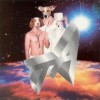 I don't know about you, but my first thought when listening to the new Trans Am opus "TA" was not "Hey, this song really could use the remix treatment!" Sadly, that is what has transpired on this, a brief EP of reconstructions of three tracks from that album. The personnel involved are interestingly enough: John Herndon, here as A Grape Dope; Dan the Automator, he of Gorillaz, Deltron 3030 and Lovage fame; underground hip-hop flavorists Prefuse 73 and Dabrye; and Trans Am's own recording engineer Jonathan Kreinik contributing a remix of his own. Really, though, there is no improvement for these songs.Thrill Jockey
I don't know about you, but my first thought when listening to the new Trans Am opus "TA" was not "Hey, this song really could use the remix treatment!" Sadly, that is what has transpired on this, a brief EP of reconstructions of three tracks from that album. The personnel involved are interestingly enough: John Herndon, here as A Grape Dope; Dan the Automator, he of Gorillaz, Deltron 3030 and Lovage fame; underground hip-hop flavorists Prefuse 73 and Dabrye; and Trans Am's own recording engineer Jonathan Kreinik contributing a remix of his own. Really, though, there is no improvement for these songs.Thrill Jockey
The source material is somewhat doomed from the start, so the remix of it can only improve upon the original or add something to it on a marginal level, which these remixes do (kind of). An added problem is also that the tracks that were chosen for remix are a few of the most static on the disc. "Cold War," "Infinite Wavelength," and "Different Kind of Love" are perhaps conducive to this process, but that doesn't make for interesting remixes, just variations. This is certainly the case with the "Cold War" mixes. Herndon does his best to add interesting textures, but we're still left with the lame keyboards and a similar beat, both of which were the main detractors from the original. Jonathan K's remix, coincidentally, focuses more on the other main detractor: the lyrics. It's a valiant effort to ghettoize the track with bizarre keyboards and higher-pitched "It's automatic" jabs, plus a funky beat to underline it. It ultimately goes nowhere, and we're left with those awful words. Dabrye succeeds in altering their material enough to elevate it, but it's still missing something. Maybe a rap from a talented underground MC? Dan the Automator and Prefuse 73 don't so much remix 'Different' - they 'resex' it, bringing the booty-shaking back in full effect. All in all, though, this is not the "perfect companion" to 'TA,' but it's the best you could expect.
 
samples:
- A Grape Dope - Cold War (Bombs and More Mix)
- Jonathan K - Cold War (War is Stupid Mix)
- Dan the Automator - Different Kind of Love Remix
 
Read More
- Administrator
- Albums and Singles
 Girl Power gets knocked back back a few steps with Blechdom's latest EP release on TB6. The horrible vocals, detuned music and equally painful subject matter have undoubtedly plunged Miss Kevin's career into unbelievable new lows. The strange thing is that it's all intentional and I love it. While I make no psychological claims, I'm guessing she has probably struggled with but accepted the fact that she will never be an angry (but cute), mousey girl with an acoustic guitar, an anorexic sex kitten, nor a post-punk lipstick lesbian-on-the-four-year-plan fronting a rock quartet who chooses to spell girl with two r's and no i. Her chosen career path is faced with critical obstacles only tightwads like NPR reporters would discuss in depth. First and foremost, she's an entertainer, and until you accept her as such, you're setting yourself up to be soured by the sound. Consider that she's also immersed in a scene dominated by very, very serious men who wear two or three names like they think they're some composer or something. This short but sassy disc compliments her recent live shows with a souvenir of said entertainment. Listening, I recall the fond memories of when I first asked myself, "did she just say 'my pussy getting wetter'," or slipped her some cash during a super-classy rendition of that 1980s hit "Private Dancer," once popularized by Tina Turner (I love that imitation harmonica sound solo). Love it or hate it, it's impossible to take your eyes off of it when it's right in front of you. That, my friends is power. At under 15 minutes, the entertainment is short and sweet and without any fart humor the critics have accused her of playing up in the past. What else are you going to spend your $8 on? Two beers and a bag of chips?
Girl Power gets knocked back back a few steps with Blechdom's latest EP release on TB6. The horrible vocals, detuned music and equally painful subject matter have undoubtedly plunged Miss Kevin's career into unbelievable new lows. The strange thing is that it's all intentional and I love it. While I make no psychological claims, I'm guessing she has probably struggled with but accepted the fact that she will never be an angry (but cute), mousey girl with an acoustic guitar, an anorexic sex kitten, nor a post-punk lipstick lesbian-on-the-four-year-plan fronting a rock quartet who chooses to spell girl with two r's and no i. Her chosen career path is faced with critical obstacles only tightwads like NPR reporters would discuss in depth. First and foremost, she's an entertainer, and until you accept her as such, you're setting yourself up to be soured by the sound. Consider that she's also immersed in a scene dominated by very, very serious men who wear two or three names like they think they're some composer or something. This short but sassy disc compliments her recent live shows with a souvenir of said entertainment. Listening, I recall the fond memories of when I first asked myself, "did she just say 'my pussy getting wetter'," or slipped her some cash during a super-classy rendition of that 1980s hit "Private Dancer," once popularized by Tina Turner (I love that imitation harmonica sound solo). Love it or hate it, it's impossible to take your eyes off of it when it's right in front of you. That, my friends is power. At under 15 minutes, the entertainment is short and sweet and without any fart humor the critics have accused her of playing up in the past. What else are you going to spend your $8 on? Two beers and a bag of chips?
samples:
Read More
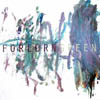 ET is hip again. I'm not really sure why but I'm assuming that it's just being rediscovered yet again by a new generation of creative musicians. But since Extended Technique is in fact old hat I find it hard to get interested in ET per se. Take the woodwind for instance — what's the point, after Bartolozzi, Zorn and the rest have done it all? While ET used to make me think, "Gosh, that's very strange way to play an xyz, how interesting and novel," now I don't. I got over it. It's not that I don't approve of ET. I do. I approve of any effectively deployed technique. But a musicians over-valuation of ET's intrinsic value can be tiresome. Perhaps we all go through that phase, musicians included, so let's charitably ascribe any ET excesses to a passing phase. Meanwhile, Subotnick and Stockhausen, among others, have shown that a tape machine or record player is as much a musical instrument as any other so it's reasonable to think of Jason's approach to tape loops as no less ET than Greg's trumpet playing. But now let's consider the additional aspect of the lamentable challenges faced by the improviser, in particular that editorial judgment cannot be used and the inevitable requirement for novelty, and I think it becomes clear that we really have to cut the brave extended technique improviser a lot of slack. We cannot realistically hope for the extraordinary brilliant results that improvisation can bless us with without expecting some of the rest to be served along side. So I'm very pleased that this CD has much more of the former than of the latter. It's mostly laid back, a bit spooky, film-esque in parts. The brilliance of Jason's sounds lies in his good taste; he concentrates only those that are genuinely good to listen to and works them all the way out without hopping restlessly from one bewildering ET trick to another. In that way it is like Robert Rutman — it's in the finesse, the commitment to beauty. I thought of that because some of the music here sounds a bit like Rutman's. Greg's contribution is sometimes ornamental and at other times it is right in the middle of the generative process. It's at those moments that this CD really impresses. My biggest criticism is that at times the sound of the room it was recorded in is unhelpful and rather distracting but that's an aspect of the paltry budgets these brave adventurers are given to work with. Incidentally, the cover art from Jason's three-year-old Audrey is very attractive.
ET is hip again. I'm not really sure why but I'm assuming that it's just being rediscovered yet again by a new generation of creative musicians. But since Extended Technique is in fact old hat I find it hard to get interested in ET per se. Take the woodwind for instance — what's the point, after Bartolozzi, Zorn and the rest have done it all? While ET used to make me think, "Gosh, that's very strange way to play an xyz, how interesting and novel," now I don't. I got over it. It's not that I don't approve of ET. I do. I approve of any effectively deployed technique. But a musicians over-valuation of ET's intrinsic value can be tiresome. Perhaps we all go through that phase, musicians included, so let's charitably ascribe any ET excesses to a passing phase. Meanwhile, Subotnick and Stockhausen, among others, have shown that a tape machine or record player is as much a musical instrument as any other so it's reasonable to think of Jason's approach to tape loops as no less ET than Greg's trumpet playing. But now let's consider the additional aspect of the lamentable challenges faced by the improviser, in particular that editorial judgment cannot be used and the inevitable requirement for novelty, and I think it becomes clear that we really have to cut the brave extended technique improviser a lot of slack. We cannot realistically hope for the extraordinary brilliant results that improvisation can bless us with without expecting some of the rest to be served along side. So I'm very pleased that this CD has much more of the former than of the latter. It's mostly laid back, a bit spooky, film-esque in parts. The brilliance of Jason's sounds lies in his good taste; he concentrates only those that are genuinely good to listen to and works them all the way out without hopping restlessly from one bewildering ET trick to another. In that way it is like Robert Rutman — it's in the finesse, the commitment to beauty. I thought of that because some of the music here sounds a bit like Rutman's. Greg's contribution is sometimes ornamental and at other times it is right in the middle of the generative process. It's at those moments that this CD really impresses. My biggest criticism is that at times the sound of the room it was recorded in is unhelpful and rather distracting but that's an aspect of the paltry budgets these brave adventurers are given to work with. Incidentally, the cover art from Jason's three-year-old Audrey is very attractive.
samples:
- Administrator
- Albums and Singles
 The direction of the latest five-song EP from Scott Herren as Savath + Savalas is in keeping with 2000's 'Folk Songs for Trains, Trees and Honey' in that the groundwork of electronica, sampling and live performance bleeds perfectly into each other and still gives off somewhat of an organic feel. "Rolls and Waves of Ignorance" opens the disc with a nice wash of swelling minor chords and percussion under climbing upright bass lines and melodic tenor saxophone, which weave throughout. The mood is tranquil yet somber and somewhat meditative, and, as the title may suggest, with an almost freejazz-type statement to it. "Paths in Soft Focus" grooves along nicely with some quirky keyboard and guitar arpeggiation and long bass tones which are all anchored by the solid drumming of Johnny Herndon (Tortoise, Isotope 217, A Grape Dope). One of the more splendid pieces of music I've heard lately would be "Folk Song for Cello," thanks in part to its brilliant arrangement and orchestration. Building from a plucked cello progression, acoustic guitar harmonics, accordion chords and a hammer dulcimer (!), the tune settles in to a laid-back groove of synth bass, tight drums and playful keyboard and vibe flourishes. "Decatur Queen" goes from repetitive acoustic guitar, upright bass and quietly squelching percussion to a ripping snare line that drives the tune into a full-sounding romp of rhythmic keyboards and wah guitar, complete with layers of horns while closing off the disc, "Rolls and Waves of Acknowledgement" brings the EP full-circle. This track follows the same compositional style as the opener, only more sparsely arranged and with the instrumentation of fuzz guitar, bowed strings and a fuller bass sound. Ironically enough, "Acknowledgement" sounds quite dark in comparison to "Ignorance." Way too short at just over seventeen minutes, this highly recommended EP may have you checking out the various other projects Mr. Herren has on the go at the moment (Prefuse 73, Delarosa + Asora) until another full length disc makes its way out there.
The direction of the latest five-song EP from Scott Herren as Savath + Savalas is in keeping with 2000's 'Folk Songs for Trains, Trees and Honey' in that the groundwork of electronica, sampling and live performance bleeds perfectly into each other and still gives off somewhat of an organic feel. "Rolls and Waves of Ignorance" opens the disc with a nice wash of swelling minor chords and percussion under climbing upright bass lines and melodic tenor saxophone, which weave throughout. The mood is tranquil yet somber and somewhat meditative, and, as the title may suggest, with an almost freejazz-type statement to it. "Paths in Soft Focus" grooves along nicely with some quirky keyboard and guitar arpeggiation and long bass tones which are all anchored by the solid drumming of Johnny Herndon (Tortoise, Isotope 217, A Grape Dope). One of the more splendid pieces of music I've heard lately would be "Folk Song for Cello," thanks in part to its brilliant arrangement and orchestration. Building from a plucked cello progression, acoustic guitar harmonics, accordion chords and a hammer dulcimer (!), the tune settles in to a laid-back groove of synth bass, tight drums and playful keyboard and vibe flourishes. "Decatur Queen" goes from repetitive acoustic guitar, upright bass and quietly squelching percussion to a ripping snare line that drives the tune into a full-sounding romp of rhythmic keyboards and wah guitar, complete with layers of horns while closing off the disc, "Rolls and Waves of Acknowledgement" brings the EP full-circle. This track follows the same compositional style as the opener, only more sparsely arranged and with the instrumentation of fuzz guitar, bowed strings and a fuller bass sound. Ironically enough, "Acknowledgement" sounds quite dark in comparison to "Ignorance." Way too short at just over seventeen minutes, this highly recommended EP may have you checking out the various other projects Mr. Herren has on the go at the moment (Prefuse 73, Delarosa + Asora) until another full length disc makes its way out there.
samples:
Read More
- Administrator
- Albums and Singles
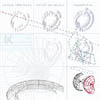 Here is a beautiful work by two artists who have different approaches to working with sound, but collaborate well. David Myers works with feedback-based sounds through various devices he has built, including a "feedback machine" I've seen him wear during live performances. (Suspended in front of his belly from a strap around his neck, he looked much like a cigarette girl from the 1930s.) Asmus Tietchens is not known to perform live, unless he's simply playing a recording of something composed in the studio. It seems his style is to take a sonic idea or source material, and go into the studio and work it for the length of an album (or double album). So you can pick up most any Tietchens CD or record, and hear a similarity between the pieces as he explores the many possibilities of his initial concept.
Here is a beautiful work by two artists who have different approaches to working with sound, but collaborate well. David Myers works with feedback-based sounds through various devices he has built, including a "feedback machine" I've seen him wear during live performances. (Suspended in front of his belly from a strap around his neck, he looked much like a cigarette girl from the 1930s.) Asmus Tietchens is not known to perform live, unless he's simply playing a recording of something composed in the studio. It seems his style is to take a sonic idea or source material, and go into the studio and work it for the length of an album (or double album). So you can pick up most any Tietchens CD or record, and hear a similarity between the pieces as he explores the many possibilities of his initial concept.'Flussdichte' is the third Tietchens / Myers collaboration. In this case, Myers sent Tietchens some material, and Tietchens went in the studio and built the pieces from this material. The result definitely has Tietchens' stamp on it — you could play it for any Tietchens fan and we'd guess it was his. (That's especially apparent to me when I hear sound that makes me think I'm in a submarine. No, I haven't been in one, but you may know this sound from movies, where the submarine is deep below the surface, and has its own ambient sounds coming from outside.) There are also some lovely melodic bits on the CD, including cut 6 ("T31:M5/10"), which sounds like amusement-park organ music, possibly emanating from an ancient merry-go-round. I won't try to describe any more — you will enjoy your own sound pictures when your allow you mind to drift with this CD playing.
Highly recommended.
Read More
- Administrator
- Albums and Singles
 Recorded inside of a ship in Germany in 2001, this 42-minute piece is sometimes very quiet, with bursts of static and sounds like gurgling water. Elsewhere it has many layers of distinct sounds from drones to gently crackling static. There's a nice range from low to high frequencies and from droning to beeping/chirping sounds, with the overall feeling of something building in intensity, gently subsiding, then regaining strength in several waves. I knew nothing of Thomas Köner before hearing these two Kontakt der Jünglinge CDs, so by checking his web site (http://www.koener.de) I was not surprised to learn he started as a composer for film. From what I know of Asmus Tietchens, he does not often perform live, as he's primarily a studio-based composer. I would have been curious to learn what equipment he used in this performance, if any. Or did he just play prerecorded bits?
Recorded inside of a ship in Germany in 2001, this 42-minute piece is sometimes very quiet, with bursts of static and sounds like gurgling water. Elsewhere it has many layers of distinct sounds from drones to gently crackling static. There's a nice range from low to high frequencies and from droning to beeping/chirping sounds, with the overall feeling of something building in intensity, gently subsiding, then regaining strength in several waves. I knew nothing of Thomas Köner before hearing these two Kontakt der Jünglinge CDs, so by checking his web site (http://www.koener.de) I was not surprised to learn he started as a composer for film. From what I know of Asmus Tietchens, he does not often perform live, as he's primarily a studio-based composer. I would have been curious to learn what equipment he used in this performance, if any. Or did he just play prerecorded bits?
samples:
Read More
- Administrator
- Albums and Singles
 ET is hip again. I'm not really sure why but I'm assuming that it's just being rediscovered yet again by a new generation of creative musicians. But since Extended Technique is in fact old hat I find it hard to get interested in ET per se. Take the woodwind for instance — what's the point, after Bartolozzi, Zorn and the rest have done it all? While ET used to make me think, "Gosh, that's very strange way to play an xyz, how interesting and novel," now I don't. I got over it. It's not that I don't approve of ET. I do. I approve of any effectively deployed technique. But a musicians over-valuation of ET's intrinsic value can be tiresome. Perhaps we all go through that phase, musicians included, so let's charitably ascribe any ET excesses to a passing phase. Meanwhile, Subotnick and Stockhausen, among others, have shown that a tape machine or record player is as much a musical instrument as any other so it's reasonable to think of Jason's approach to tape loops as no less ET than Greg's trumpet playing. But now let's consider the additional aspect of the lamentable challenges faced by the improviser, in particular that editorial judgment cannot be used and the inevitable requirement for novelty, and I think it becomes clear that we really have to cut the brave extended technique improviser a lot of slack. We cannot realistically hope for the extraordinary brilliant results that improvisation can bless us with without expecting some of the rest to be served along side. So I'm very pleased that this CD has much more of the former than of the latter. It's mostly laid back, a bit spooky, film-esque in parts. The brilliance of Jason's sounds lies in his good taste; he concentrates only those that are genuinely good to listen to and works them all the way out without hopping restlessly from one bewildering ET trick to another. In that way it is like Robert Rutman — it's in the finesse, the commitment to beauty. I thought of that because some of the music here sounds a bit like Rutman's. Greg's contribution is sometimes ornamental and at other times it is right in the middle of the generative process. It's at those moments that this CD really impresses. My biggest criticism is that at times the sound of the room it was recorded in is unhelpful and rather distracting but that's an aspect of the paltry budgets these brave adventurers are given to work with. Incidentally, the cover art from Jason's three-year-old Audrey is very attractive.
ET is hip again. I'm not really sure why but I'm assuming that it's just being rediscovered yet again by a new generation of creative musicians. But since Extended Technique is in fact old hat I find it hard to get interested in ET per se. Take the woodwind for instance — what's the point, after Bartolozzi, Zorn and the rest have done it all? While ET used to make me think, "Gosh, that's very strange way to play an xyz, how interesting and novel," now I don't. I got over it. It's not that I don't approve of ET. I do. I approve of any effectively deployed technique. But a musicians over-valuation of ET's intrinsic value can be tiresome. Perhaps we all go through that phase, musicians included, so let's charitably ascribe any ET excesses to a passing phase. Meanwhile, Subotnick and Stockhausen, among others, have shown that a tape machine or record player is as much a musical instrument as any other so it's reasonable to think of Jason's approach to tape loops as no less ET than Greg's trumpet playing. But now let's consider the additional aspect of the lamentable challenges faced by the improviser, in particular that editorial judgment cannot be used and the inevitable requirement for novelty, and I think it becomes clear that we really have to cut the brave extended technique improviser a lot of slack. We cannot realistically hope for the extraordinary brilliant results that improvisation can bless us with without expecting some of the rest to be served along side. So I'm very pleased that this CD has much more of the former than of the latter. It's mostly laid back, a bit spooky, film-esque in parts. The brilliance of Jason's sounds lies in his good taste; he concentrates only those that are genuinely good to listen to and works them all the way out without hopping restlessly from one bewildering ET trick to another. In that way it is like Robert Rutman — it's in the finesse, the commitment to beauty. I thought of that because some of the music here sounds a bit like Rutman's. Greg's contribution is sometimes ornamental and at other times it is right in the middle of the generative process. It's at those moments that this CD really impresses. My biggest criticism is that at times the sound of the room it was recorded in is unhelpful and rather distracting but that's an aspect of the paltry budgets these brave adventurers are given to work with. Incidentally, the cover art from Jason's three-year-old Audrey is very attractive.
samples:
Read More
- Administrator
- Albums and Singles
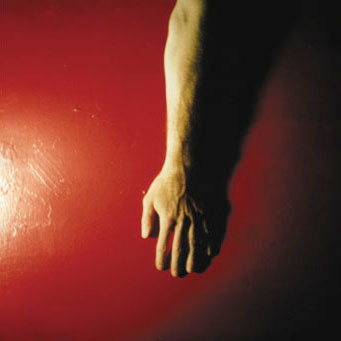 Just when you think you can predict Low, they toss a curve ball in your direction which ends up coming back and hitting you smack on the noggin' and knocks you out. Without a doubt, Low has recorded their creepiest, most diverse, most intense, and least hit-song-friendly record to date. Once again, I am completely floored.
Just when you think you can predict Low, they toss a curve ball in your direction which ends up coming back and hitting you smack on the noggin' and knocks you out. Without a doubt, Low has recorded their creepiest, most diverse, most intense, and least hit-song-friendly record to date. Once again, I am completely floored.
 
Lyrically and musically, the band keeps growing (exponentially so) in their abilities and daringness, merging fantastic vocal harmonies with shudderingly eerie music, unpredictable lyrics and deceptively simple and un-abused melodies. There's a certain intimacy to Low's music, as anybody who has seen them live can attest to, and on early recordings, even Low's albums sounded like the band could easily be in the same room as the listener. Over the last few albums, however, the band has almost distanced the live feel with the recorded sound, as production has included a number of elements which simply cannot be repeated live with their simple three-piece lineup.
For Trust, the group tried a new approach. The trio captured the recordings in Duluth before bringing to producer Tschad Blake (Richard Thompson, Los Lobos, Sheryl Crow) for the mix. While much of the music was live, the group actually experimented with a larger variety of both effects and instruments. Backup singers, bells, organ, accordion and banjo aren't things most Low fans are used to hearing (but then again, neither was the optigan back on Secret Name). The first most noticable departure is the album's overall aggression, heard right from the get-go.
Forceful percussive sounds are the driving forces on the song's opener, "(That's How You Sing) Amazing Grace," a vocally-harmonic treat that gives me chilling goose-bumps, along with "Candy Girl," which I swear has toilet flushes, and "I am the Lamb," (a track with guest vocals by Gerry Buckley of America) which opens quietly with clapping and makes a song-length crescendo to the point of stomping and hitting wooden blocks by the song's end. Anybody who has seen them over the past year will probably recognize the jaw-droppingly beautiful songs like "Little Argument with Myself" and "In the Drugs," along with songs like "John Prine" which have been part of their live set since before last year's album was even released. The group even tries rocking out on songs like the distortion-heavy "Canada," the loud and in-your-face blare of the morbid "Snowstorm," and the George Harrison-meets-Phil Spector "La La La Song." (I swear, somebody's been listening to All Things Must Pass!) Mimi has very up close and personal moments with the songs "Tonight," "Point of Disgust" and the album drifts off into bliss with the delay-heavy "Shots and Ladders."
Trust may not get the band any airplay on commerical radio, a song in a TV ad, or the closing credits of a movie, but I can safely say it will make many people's top lists by the end of the year.
 
samples:
 
Read More
- Administrator
- Albums and Singles
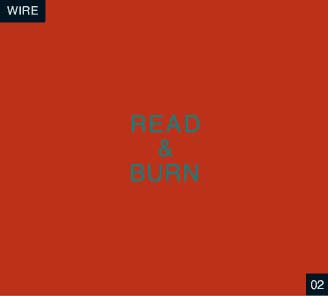 I never thought that #1) I would ever see Wire live or #2) I would be sitting here reviewing new material from the quartet. The method behind the 'Read and Burn' series is to record something and release it to the fans quickly, without loads of promotion and other time-consuming hassles that come along with full-length albums for record company machines. With this approach, the band feels that all fans have access to the recordings while the fence-sitters can just get a full-length recording when it comes out. Take this warning: volume two in this series is out now and will -not- be distributed to stores at all. Instead, due to the success of the first volume, the group is selling it direct from the web and at their shows. Wire reintroduced themselves to the world with their "greatest hits" shows two years ago. The band discovered that it was amazing to be playing together and a "hits" tour wasn't something they wanted to get in the business of doing. 'Read and Burn 01' saw the band tossing a very tasty treat to the bands: six short and fiery songs totalling about 16 minutes, heavy on the guitar and feverishly energetic. On volume two, the band has expanded the sound to include more electronic pieces, like the disc's jaw-dropping closer (their most recent concert-opener), "99.9," and "Nice Streets Above" which could easily please any fan of the 'Bell is a Cup' album. Fans of the first volume will be pleased with the rough and fast tunes "Trash/Treasure" and the song simply titled, "Read and Burn," where the bark-like lyrics take a back seat to a rawkus progression only a band like Wire could pull off. Over two decades after their inception, it's amazing to think that this band is still as fresh, original and true to a sound which has become all their own. I can't wait for the next one in the series.
I never thought that #1) I would ever see Wire live or #2) I would be sitting here reviewing new material from the quartet. The method behind the 'Read and Burn' series is to record something and release it to the fans quickly, without loads of promotion and other time-consuming hassles that come along with full-length albums for record company machines. With this approach, the band feels that all fans have access to the recordings while the fence-sitters can just get a full-length recording when it comes out. Take this warning: volume two in this series is out now and will -not- be distributed to stores at all. Instead, due to the success of the first volume, the group is selling it direct from the web and at their shows. Wire reintroduced themselves to the world with their "greatest hits" shows two years ago. The band discovered that it was amazing to be playing together and a "hits" tour wasn't something they wanted to get in the business of doing. 'Read and Burn 01' saw the band tossing a very tasty treat to the bands: six short and fiery songs totalling about 16 minutes, heavy on the guitar and feverishly energetic. On volume two, the band has expanded the sound to include more electronic pieces, like the disc's jaw-dropping closer (their most recent concert-opener), "99.9," and "Nice Streets Above" which could easily please any fan of the 'Bell is a Cup' album. Fans of the first volume will be pleased with the rough and fast tunes "Trash/Treasure" and the song simply titled, "Read and Burn," where the bark-like lyrics take a back seat to a rawkus progression only a band like Wire could pull off. Over two decades after their inception, it's amazing to think that this band is still as fresh, original and true to a sound which has become all their own. I can't wait for the next one in the series.
samples:
Read More

